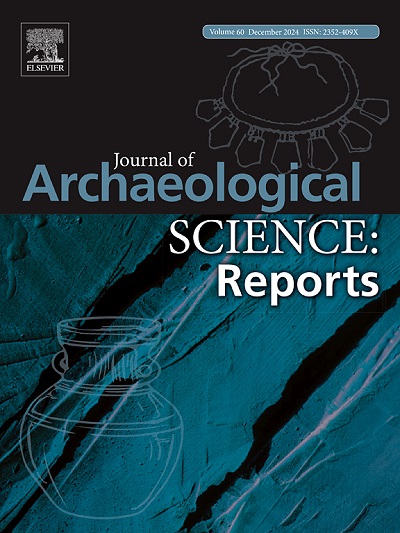First characterization of beads and minerals from the pre-Columbian Calchaquí Valley, Northwestern Argentina
IF 1.5
2区 历史学
0 ARCHAEOLOGY
引用次数: 0
Abstract
This paper presents the first characterization of bluish and green beads and mineral debris found in three sites of the Calchaquí Valley, Northwestern Argentina, dated from Late pre-Columbian times (10 to 16th centuries). Complementary techniques for identifying elemental composition and mineral species (SEM-EDS, X-ray diffraction, Raman Spectroscopy) showed that almost all the beads found in the sites were made of turquoise, while two of them were made of chrysocolla. Regarding the mineral debris, two were identified as turquoise, two as aragonite and one as atacamite. Except the latter, all of them could have been related to local bead production. The atacamite fragment could have arrived as a residue of the turquoise extraction or intentionally selected for metallurgical purposes. The presence of these minerals suggest the potential strong connection that these sites in the Calchaqui Valley had with neighboring highlands (Puna of Salta and Catamarca) where sources of these ores are located and indicate a prevalent use of beads made of turquoise in the sites of the Calchaquí Valley in the Late and Inka periods.
首次鉴定来自阿根廷西北部Calchaquí前哥伦比亚山谷的珠粒和矿物
本文首次介绍了在阿根廷西北部Calchaquí山谷的三个遗址中发现的蓝色和绿色珠子和矿物碎片的特征,这些遗址可追溯到前哥伦比亚时代晚期(10至16世纪)。元素组成和矿物种类鉴定的互补技术(SEM-EDS, x射线衍射,拉曼光谱)表明,在这些遗址中发现的几乎所有珠子都是绿松石制成的,其中两个珠子是由黄铜矿制成的。关于矿物碎片,有两块被鉴定为绿松石,两块为文石,一块为阿卡石。除了后者,其他都可能与当地的头饰生产有关。阿卡石碎片可能是作为绿松石提取的残留物到达的,也可能是为了冶金目的而故意选择的。这些矿物的存在表明,Calchaqui山谷的这些遗址与这些矿石的产地所在的邻近高地(Salta的Puna和Catamarca)有潜在的紧密联系,并表明Calchaquí山谷遗址在晚期和印卡时期普遍使用绿松石制成的珠子。
本文章由计算机程序翻译,如有差异,请以英文原文为准。
求助全文
约1分钟内获得全文
求助全文
来源期刊

Journal of Archaeological Science-Reports
ARCHAEOLOGY-
CiteScore
3.10
自引率
12.50%
发文量
405
期刊介绍:
Journal of Archaeological Science: Reports is aimed at archaeologists and scientists engaged with the application of scientific techniques and methodologies to all areas of archaeology. The journal focuses on the results of the application of scientific methods to archaeological problems and debates. It will provide a forum for reviews and scientific debate of issues in scientific archaeology and their impact in the wider subject. Journal of Archaeological Science: Reports will publish papers of excellent archaeological science, with regional or wider interest. This will include case studies, reviews and short papers where an established scientific technique sheds light on archaeological questions and debates.
 求助内容:
求助内容: 应助结果提醒方式:
应助结果提醒方式:


